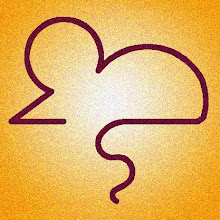I've a fair bit to talk about this week as it's been such an exciting time recently, so plan to blog a few times over the next few days.
.
Last week I attending a seminar at Demontfort University in Leicester. The seminar was all about Custom Fit Rapid Prototyping. I'll try not to get too boring about this as I find it fascinating, but basically Rapid Prototyping is a tool that some engineering companies, car manufacturers etc use to make a prototype part from a computer file. It's simply "printing in 3D", where a laser "prints" an outline onto a layer of material (plastic, wax, metal etc) and then prints another layer on top, then another and another and another and eventually it builds up into a full 3D model, which can then be cast using conventional methods.
.
The flip-side of rapid prototyping is called "reverse engineering"; say a part needs replacing on an antique car, the part is no longer manufactured. in order to make a new part that will math the original perfectly, a laser is used to "scan" the part, then the virtual computer model that is generated by the laser's information is edited if required (say the old part was worn, the computer model would be edited to restore it to the original shape) and then a prototype part is "printed" and a new part cast.
.
Here is an image showing this process taking place; I took along a copy of Fly Fishing to the seminar and asked if they could demonstrate the equipment using the medallion as an example. Well, they agreed and here is the scanning taking place:

You can just see on the computer screen in the photo, the computer model being generated by the laser as it scans. It was incredibly fascinating to watch my sculpture recreated in virtual space!
.
And here is the result! Coincidentally my day-job involves computer generated 3D models, so I was able to take the data from the seminar demonstration and transfer it into 3D Studio max, the program I use at work. Using this program I can manipulate the virtual model and "try on" any material I fancy, which is hugely useful to me as this means I can try out different variations before actually casting them, which will save me costly materials and duff models.

This render (image) was generated 100% on computer, using the scanned data to make a 3D model then applying a material, in this case a shiny metal. Admittedly the scanned model has lost a fair amount of detail compared to the original sculpture, this is partly due to the scan being a rushed demo.

If I chose to pay to have this done, instead of been a bit cheeky and asked for a demo during a seminar, it would have cost me around £500 ($1000). the laser scanner and software retails at over £90,000 ($180k) so I can't see this becoming a regular feature of my hobby/business, but I found it all so interesting I felt I had to share!

Above is another example - this is a copy with a frosted glass material applied. I also get to play with patterns, like this:



1 comment:
Fascinating - I love the glassy one. I was pondering this technology the other day as I'm thinking about producing a enlarged 3D version of a museum object (a die plate) for partially sighted people to touch. Wonder if this would work.. (and be affordable!)
Jen (Xan)
Post a Comment